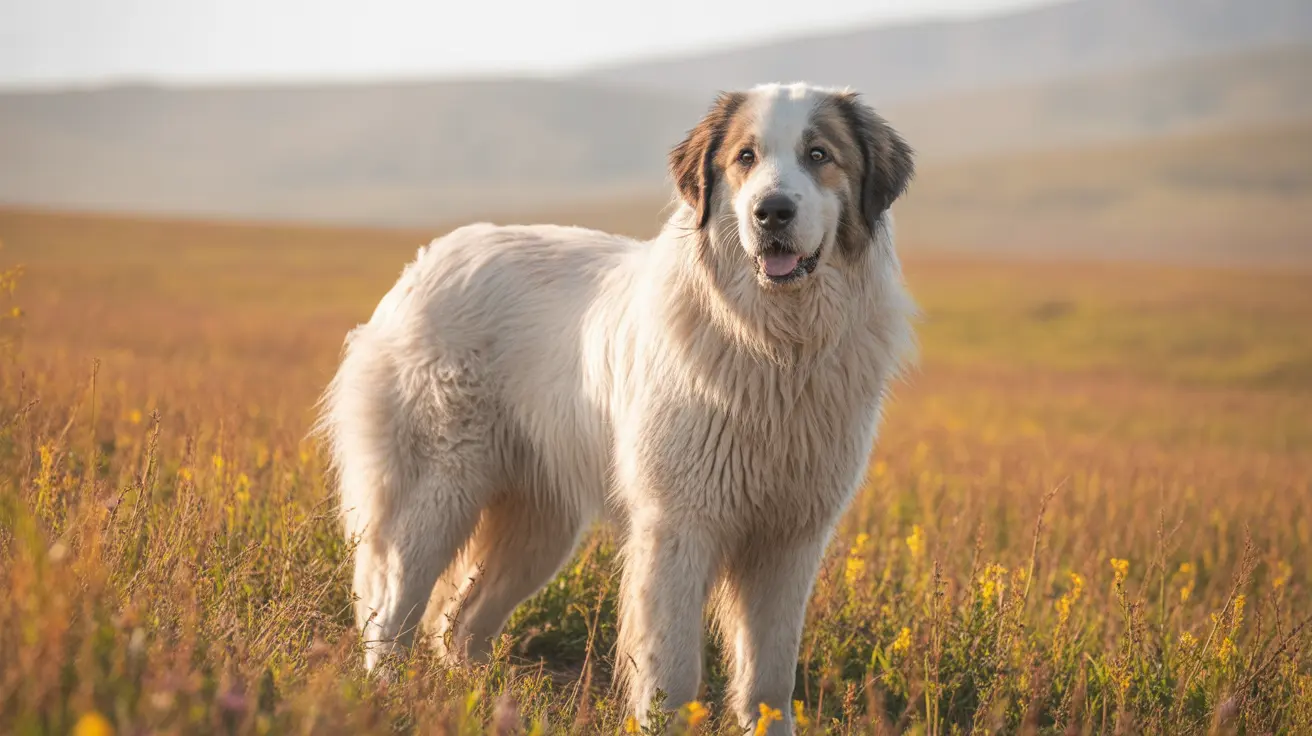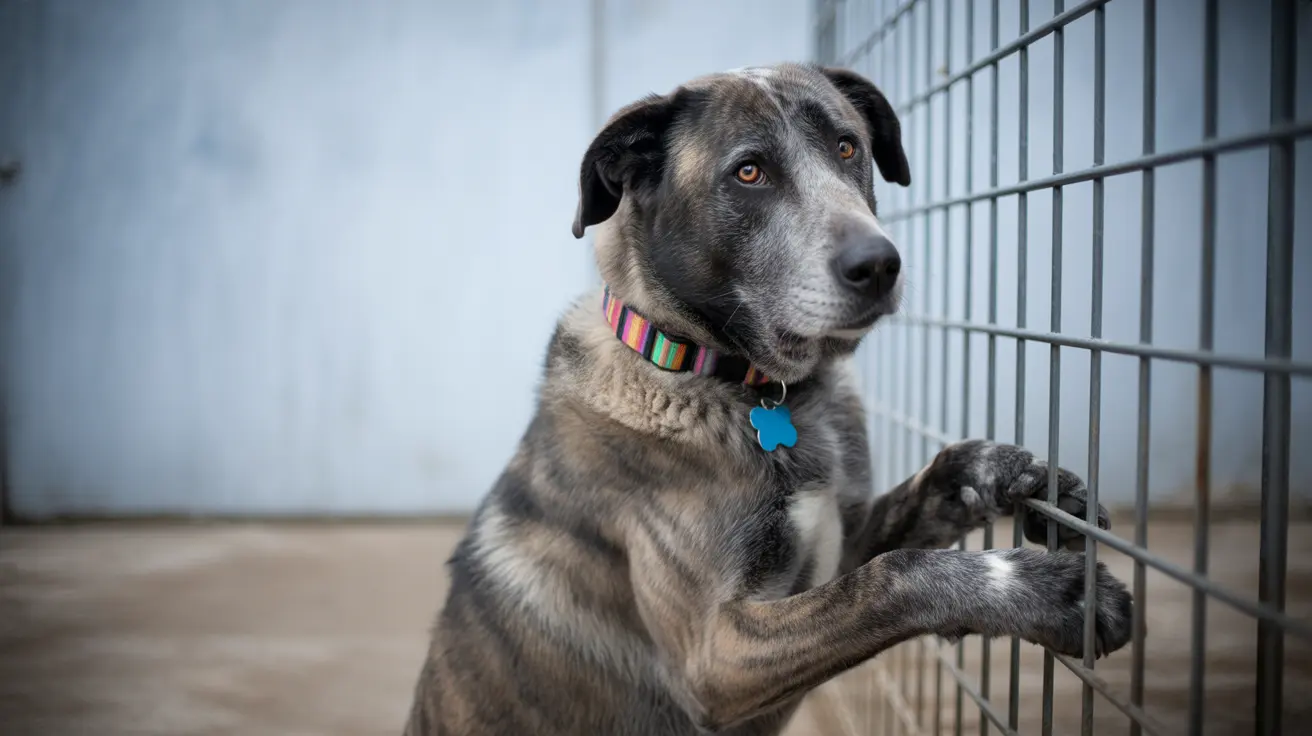The Great Pyrenees, also known as the Pyrenean Mountain Dog, stands as one of the most magnificent large flock guardian breeds in existence. With their imposing presence and gentle nature, these remarkable dogs have transitioned from their historical role as livestock protectors in the French Pyrenees to becoming beloved family companions worldwide.
Originally bred to guard sheep and goats from predators like wolves and bears, these noble giants have maintained their protective instincts while developing an exceptional ability to integrate into modern family life. Their unique combination of vigilant guardianship and gentle temperament makes them particularly special among large dog breeds.
Today's Great Pyrenees continues to exemplify the perfect balance between protector and companion, adapting to various living situations while maintaining their dignified and watchful nature. This comprehensive guide explores everything prospective and current owners need to know about this remarkable breed.
Historical Legacy and Origins
The Great Pyrenees origins trace back over 11,000 years to the majestic Pyrenees Mountains straddling France and Spain. These white livestock guardians descended from ancient mountain dogs of Asia Minor, developing into the powerful and resilient breed we know today.
Throughout French history, these dogs served dual roles—protecting flocks for peasants while earning admiration from nobility for their regal bearing and unwavering loyalty. This rich heritage has shaped both their physical characteristics and behavioral traits, imbuing the modern Great Pyrenees with an innate sense of duty and an unmistakable noble presence.
Physical Characteristics and Appearance
The Pyrenean Mountain Dog is truly impressive in stature. Males stand between 27-32 inches at the shoulder and can weigh over 100 pounds. Females, though slightly smaller, still embody the breed's hallmark strength and dignity. Built for endurance and agility, their bodies reflect their historical purpose as tireless guardians in rugged mountain terrains.
Distinctive Coat and Coloring
The Great Pyrenees boasts a beautiful and functional double coat: a weather-resistant outer layer and a dense insulating undercoat. Their predominantly white fur, sometimes marked with pale gray or tan patches, provided camouflage among the snow and rocks of their native mountains. This coat requires regular upkeep, but it remains one of the most recognizable and endearing traits of the breed, contributing to their majestic appearance.
Temperament and Personality Traits
The Great Pyrenees is renowned for its unique temperament, which blends gentleness, patience, and steadfast protectiveness. They are exceptionally caring with family members, especially children, often acting as patient guardians. Despite their calm demeanor, they remain alert and ready to defend their people or property if needed.
Social Behavior and Family Integration
Understanding Great Pyrenees behavior is crucial for successful ownership. While naturally protective, these dogs display remarkable adaptability when properly socialized. From a young age, Great Pyrenees puppies require consistent and positive exposure to various people, animals, and environments. Doing so fosters well-adjusted, confident adults who can seamlessly integrate into family life or coexist with other pets.
Care Requirements and Management
Grooming Needs
Caring for a Great Pyrenees' coat demands regular attention, particularly due to their heavy shedding during seasonal changes. Weekly brushing is essential to remove loose fur and prevent matting, while daily grooming may be necessary during the spring and fall. Regular grooming sessions not only keep their coat pristine but also offer a chance to check for skin issues or parasites common to dogs with dense fur.
Exercise and Activity Requirements
Despite their imposing size, the Great Pyrenees has moderate exercise requirements. Daily walks and supervised access to a secure outdoor space fulfill their need for physical activity and mental stimulation. As natural patrol dogs, they enjoy surveying their environment and may spend considerable time calmly watching over their territory. Structured playtime and gentle hikes are also excellent ways to channel their energy while strengthening the bond with their owners.
Training and Socialization
Training a Great Pyrenees requires patience, consistency, and a clear understanding of this breed's independent mindset. Their ancestral purpose as decision-makers for flock protection means they may not be as eager to please as some other breeds. Early socialization and positive reinforcement training methods are critical to encouraging cooperation and building trust. Setting clear boundaries, maintaining a gentle approach, and reinforcing desired behaviors with praise or treats can make a marked difference in achieving a well-mannered companion.
Health and Wellness
Ensuring the long-term health of a Great Pyrenees involves attention to several breed-specific vulnerabilities. Owners should monitor for common large breed health challenges such as hip and elbow dysplasia, bloat (gastric torsion), and certain genetic conditions. Regular veterinary check-ups, a balanced diet tailored to their age and activity level, and preventative care can help these dogs enjoy a typical lifespan of 10-12 years. Responsible breeding practices also play a major role in maintaining the breed's overall health and vitality.
Frequently Asked Questions
- What is the origin of the Great Pyrenees? The Great Pyrenees originated in the French Pyrenees mountains as a devoted livestock guardian, bred to protect sheep and goats from predators in harsh mountain conditions.
- What are the main characteristics of the Great Pyrenees? This breed is large, strong, intelligent, and known for a calm, noble demeanor. They possess a thick white double coat and a gentle, attentive personality.
- Is the Great Pyrenees suitable as a family pet? Yes, with early training and proper socialization, Great Pyrenees dogs are exceptionally gentle and protective toward their families, making them excellent companions.
- How big does a Great Pyrenees get? Males typically reach 70-80cm (27-32 inches) in height and can weigh over 60kg (over 100 pounds). Females are slightly smaller, but still robust and strong.
- What kind of coat does the Great Pyrenees have? They have a dense, weather-resistant double coat. While most are pure white, some exhibit patches of light gray or tan.
- What are typical health concerns for the Great Pyrenees? Common issues include hip dysplasia, bloat, and inherited diseases found in large breeds. Regular health screenings and veterinary care can help manage these risks.
- How much exercise does a Great Pyrenees need? They need moderate daily exercise—regular walks and mental stimulation keep them healthy and content. Despite their size, they do not require extensive athletic activities.
- Are Great Pyrenees easy to train? While highly intelligent, they are also independent. Consistent, patient, and positive training approaches work best for this breed.
- How often should a Great Pyrenees be groomed? Weekly brushing is recommended, but during peak shedding seasons, grooming may need to occur several times a week to manage their thick undercoat.
- Do Great Pyrenees get along with other animals? With proper introductions and ongoing training, they can coexist well with other pets, often showing calm tolerance and protectiveness toward other household animals.
- What makes the Great Pyrenees a good guardian? Their ever-watchful temperament, intrinsic cautiously protective instinct, and calm, confident demeanor make them outstanding natural guardians both for livestock and family homes.
The Great Pyrenees represents an exceptional combination of gentle companion and capable guardian. Their loyalty, adaptability, and unwavering protective nature make them ideal for families looking for a devoted friend and vigilant protector. With dedicated care and understanding of their unique qualities, the rewards of owning this majestic breed are truly immeasurable—bringing security, companionship, and joy to any household willing to embrace their noble spirit.






